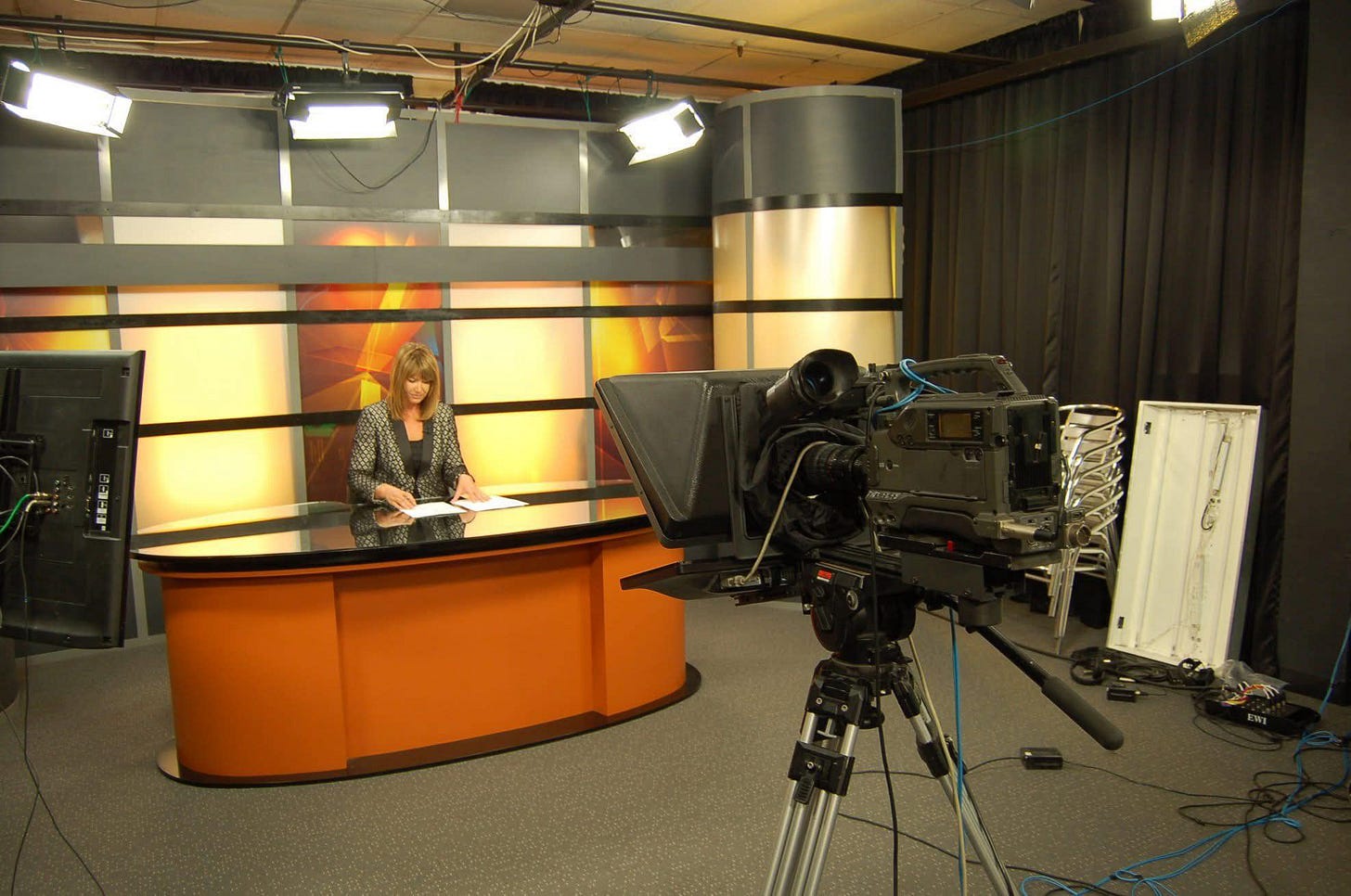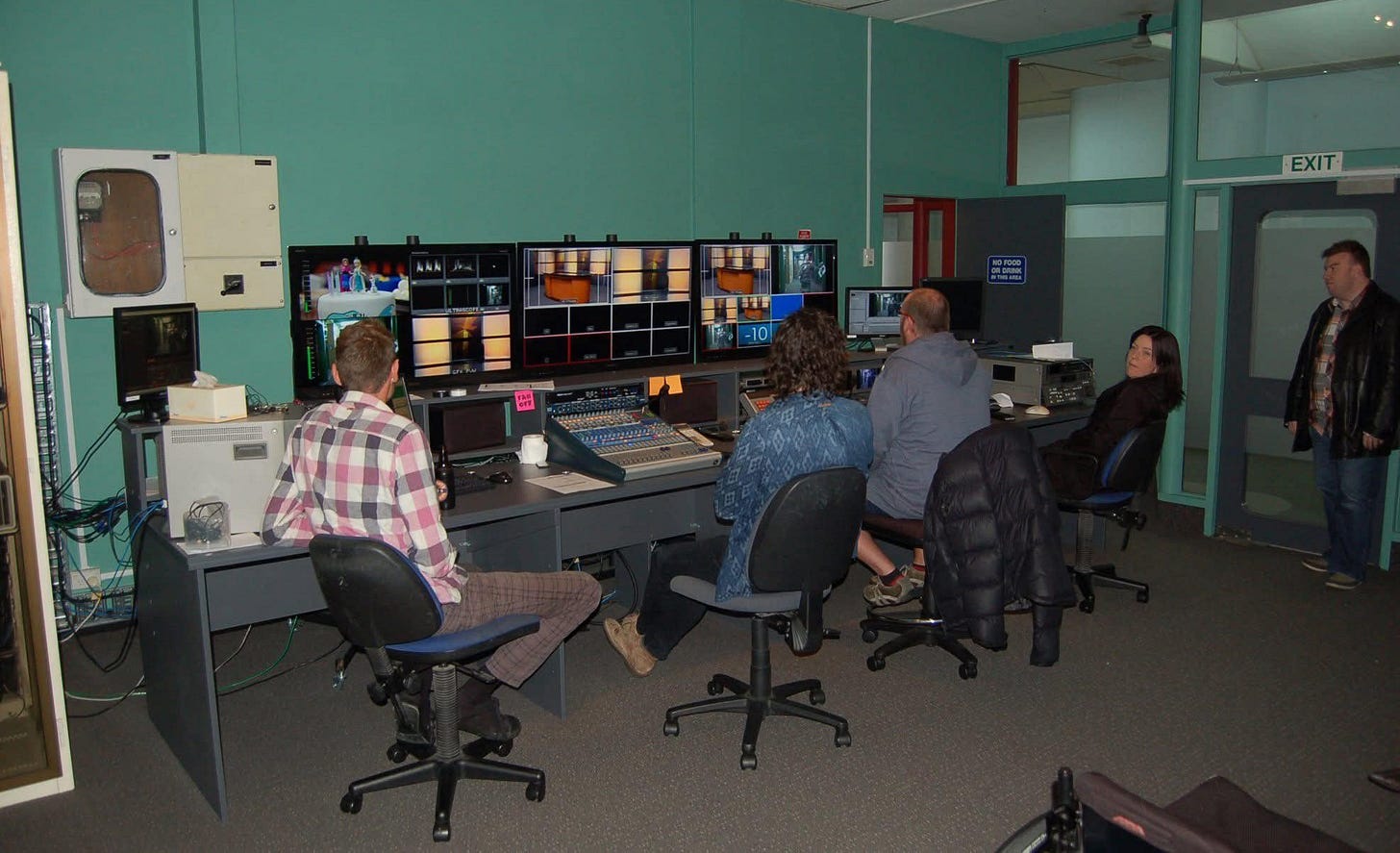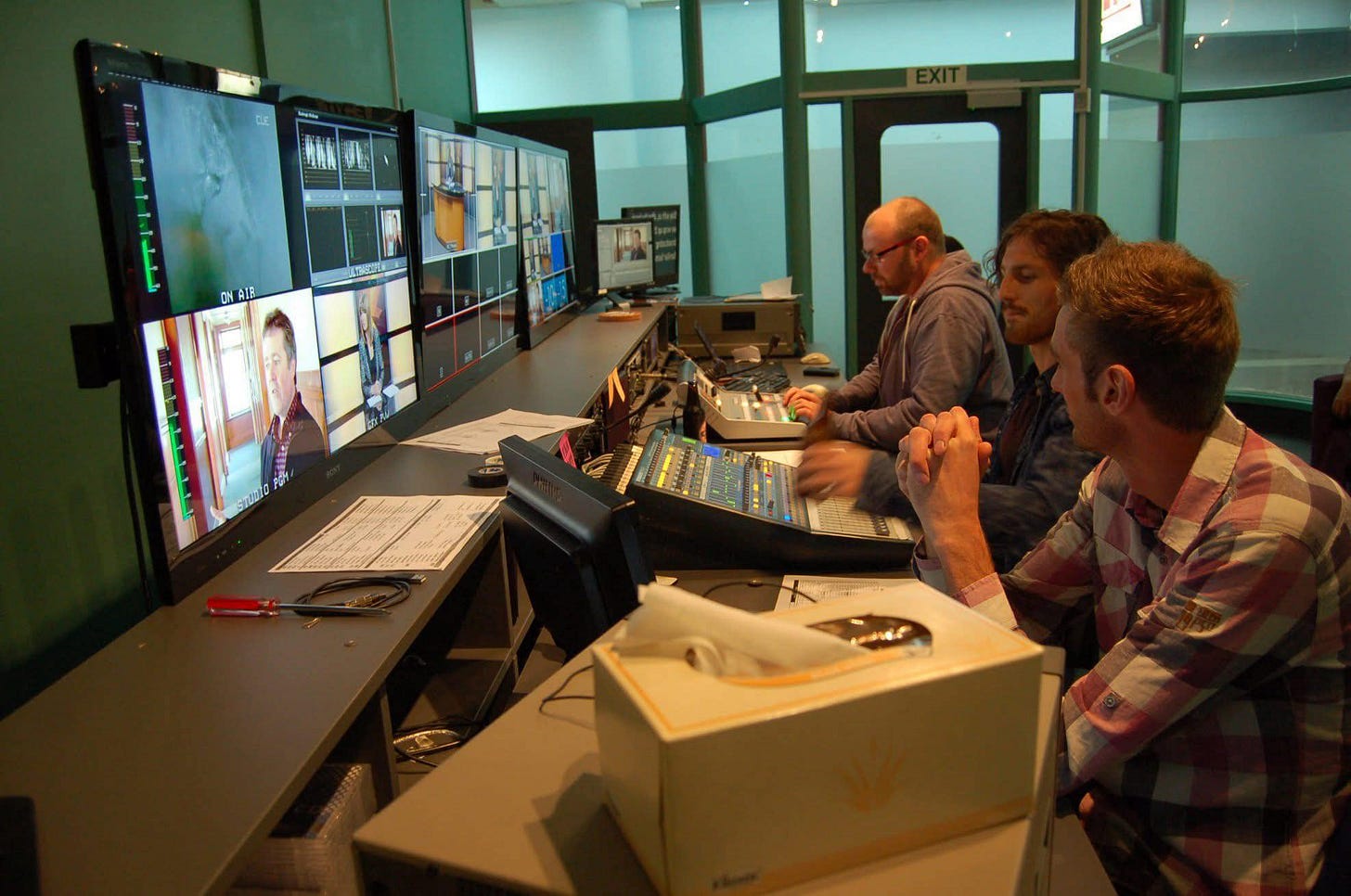Ten years on: What we lost when Southland's TV station closed
What the local TV station delivered to Southland, on the smell of an oily rag, for so long was admirable. Maybe that was taken for granted by many at the time.

Today (Thursday) marks 10 years to the day Southland’s regional television station, Cue TV, was switched off. Logan Savory takes a look back at the role the station played in the community, and what Southland lost with its closure a decade ago.
On April 10, 2015, the plug was pulled on Cue TV.
It ended a 19-year run for Southland’s regional TV station, which started as Mercury TV and also had a period called Southland TV.
What it delivered to Southland for so long, on the smell of an oily rag, was admirable. Maybe that was taken for granted by many at the time.
One of its former staff members, Kerry Du Pont, says the smell of an oily rag suggestion may even be a stretch.
“We would have been fortunate to even smell that oily rag.”
Du Pont joined in 1997 when it was then called Mercury TV. He was a teenage radio broadcaster with an ambitious idea to create a youth TV show.
It was pitched to Mercury TV, but the problem was Du Pont and the others in on it with him had no TV experience.
That led to some work experience opportunities once a week on a Wednesday and then onto Du Pont’s first paying job in 1997 which was working on Mercury TV’s club rugby coverage.
Every Saturday during winter Mercury TV would broadcast club rugby games giving grassroots players the unique chance to view themselves on TV and have Tom Conroy and others commenting on their efforts.
Du Pont has gone on to work on Sky Sport broadcasts - which have included All Blacks tests and Black Caps games.
He looks back almost surprisingly at what Mercury TV produced with such limited resources.
“Back in 1997 when Mercury was still starting out, [the club rugby coverage] was out of the back of a Northern Southland Transport truck. We had trestle tables we would set up.
“Every week we would pull gear out of the control room and set it up on these trestle tables. At the end of the day, we would have to put it all back in the control room and re-wire it again.”
Later on, Du Pont did get his wish to work on a youth programme at Mercury TV with the launch of Speights Powa.
“It was a risk, and it had plenty of tumbles and toeing the line, as far as broadcast regulations.
“But it was so different, not just to anything else on the channel but anything the province had seen. It had a cult following,” Du Pont says.
“It also gave me the ability to direct a live show, and I went from directing this half-hour alcohol-sponsored tertiary show to spending 14 years directing What Now on TV2.”
Tom Conroy was the key figure behind keeping the Southland regional television station running for the majority of the 19 years.
Mercury TV was started in 1996 by the newly established Southland Regional Television Limited - which was largely owned by CRT [Combined Rural Traders Society].
One of the drivers in getting the station launched in 1996 - as well as another initial investor - was Steve Canny. Canny now works for Southland’s regional development agency - Great South.
The station was eventually bought by West175 Media but in 2002 the British-based company revealed it planned to shut down Mercury TV, with just a week’s notice.
Conroy had been the station’s sports presenter and was involved in the management of the station.
Within a week Conroy put together a bid to take over ownership and save Southland’s local TV station.
He got the station on SKY’s nationwide platform growing the potential audience before rebranding to Southland TV.
In 2007 a further rebrand took place with the name Cue TV being introduced.
Conroy remained the owner through to its closure.
“Everything has its time. One of the things I’m proud of is when that time came, we made a dignified exit rather than running the company into the ground,” Conroy told The Tribune.
“Things have been watered-down with the proliferation of broadcast platforms, there is just not enough money to go around, and it just became unviable.
“Our time came, and we moved on.”
Conroy is now based in North Canterbury and is involved in business consultancy. He has also kept his hand in the television game helping with the Grassroots Rugby programme that has screened on SKY.
Although he says he does miss the daily buzz of putting out a news bulletin.
Ten years on from the closure Conroy reflects proudly on what the local Southland station achieved in its 19 years.
It included broadcasting a telethon event to raise funds for an MRI scanner at the hospital, and the world record interview with Sir Tim Shadbolt which raised funds for the St John ambulance service.
Not to mention the countless nightly shows that were produced.
Dear to Conroy’s heart was the station’s sports coverage. It ranged from club rugby to a New Zealand-India Davis Cup tennis tie, which was broadcast to an estimated audience of 600 million in India.
“We were quite creative in taking on [projects] with relatively small resources. We didn’t have much to play with, but we played the game well,” Conroy says.
“I remember the day we covered the Davis Cup against India in the morning, and then we filmed the New Zealand Swimming Champs in the evening.
“The same crew, the same people, shifting from the stadium to the swimming pool. We had to move the gear each day to do those two things.”

What Conroy is most proud of when reflecting on the Southland television station’s 19-year run was the opportunities it provided the many staff who passed through the place.
Some progressed to national broadcasting opportunities.
It included journalists Lisa Glass, Shaun Summerfield, and Megan Nicholl - amongst others.
Dwayne Carey was one of the camera operators who landed work for New Zealand’s two main television news networks - TVNZ and TV3 - on the back of his deeds at the Southland station.
Carey was there when the lights were first turned on in 1996 - at the then-named Mercury TV - and he remained at the station through to when the lights were turned off in 2015.
“I saw a lot of people come and go over those 19 years. I just wished it had lasted one more year to make it 20 years,” Carey says.
Carey had studied at the Southland Polytechnic in 1992 with the hope of becoming a camera operator.
However, he quickly realised getting a gig with the national networks, without going through broadcasting school in Christchurch, or having any work experience, was problematic.
It was in 1996 when he was made aware of an advertisement in The Southland Times, that a door was opened. The Ad was a calling for potential staff for a new Southland television station.
That led him to the opportunity he was after.
“If I ever thought there was going to be a TV station start up in Southland, I thought it would be in a double garage with a caravan setup and an aerial, with a one-man band.
“No, this was serious.”

Carey started in the job on September 1, 1996, and the first broadcast date for Mercury TV was on October 31, 1996.
It was stressful putting out a news bulletin each night during those early days with inferior equipment to work with, Carey says.
All while on annual pay of $12,500 a year, at that time.
“We got put under so much pressure to pump that news out every day, and we had these decks breaking down on us.
“But we always found a way, sometimes the news would go out a wee bit late. Working under that pressure shapes you as a person.”
Carey says they saw the storm clouds brewing in the lead up to Cue TV’s closure in 2015. The challenge to bring in money to keep the station going got more and more difficult.
Carey says it was probably one of the early dominoes to fall in a wider media industry that has crumbled financially over the past decade.
Just last year Carey got notified that his contract with Warner Brothers Discovery was ending as they closed the Newshub operations. TV3’s 6pm news is now produced by Stuff.
“It is like a domino effect when you see the rest of the media now. [Channel 39] in Dunedin closed, you look what has happened at TV3, TVNZ is even laying people off.
“I saw the signs 10 years ago because it always starts at the bottom and works its way up.”
Carey has helped to keep the memories of Southland’s TV station alive since its closure.
He took home most of the remaining archive footage when it closed and he has since undertaken the mammoth task of digitising as much of it as he can.
He has also created the Southland's Past -Te Wāmua o Murihiku Facebook page where many old Mercury, Southland TV, and Cue TV clips can now be found.
Carey views it as a “caretaker” role to help retain that important chunk of Southland’s history.
The television station may be no longer but 10 years on its significant impact on the province remains visible.









The station was a fantastic thing for the region.
I worked at the station for five years in a variety of positions. The experience changed my life for the better.